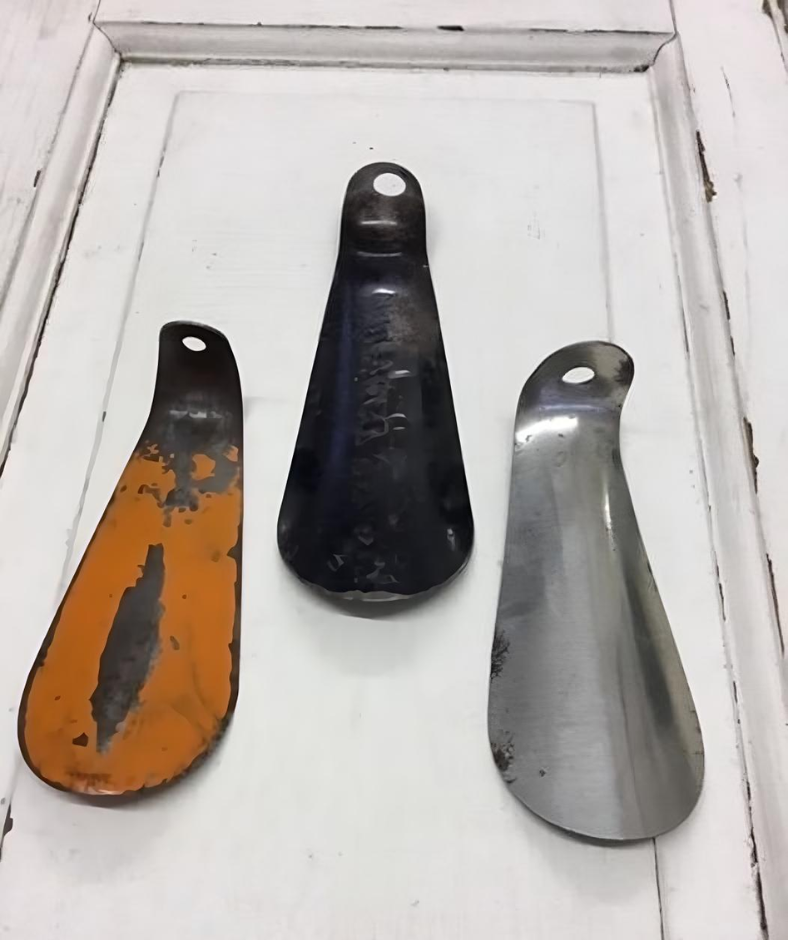The shoe horn, a seemingly simple tool, has an unexpectedly rich history that spans centuries. From its humble beginnings as a functional accessory to its status as a collector’s item today, the shoe horn has stood the test of time. Let’s explore its journey through history, its practical uses, and its lasting legacy.

The Origins of the Shoe Horn: A Practical Invention
The shoe horn traces its origins back to the 15th century. During this period, shoes were often made from delicate materials that could be easily damaged when being put on. This led to the invention of a tool designed to assist wearers in sliding their feet into their footwear without crushing or bending the heel.
Materials of the Early Shoe Horns
Early shoe horns were crafted from natural materials such as:
- Animal Horn: The namesake material, animal horns, were abundant and durable, making them an ideal choice.
- Bone: Polished bone provided a smooth surface for the foot to glide into the shoe.
- Wood: Carved wooden shoe horns were a practical option for those without access to horn or bone materials.
These early designs prioritized function over form but laid the foundation for a tool that would evolve alongside fashion and footwear.
Evolution Through the Ages
As footwear styles became more intricate and materials more varied, the shoe horn adapted to meet these changing needs.
Incorporating New Materials
By the 18th and 19th centuries, shoe horns were being produced using a broader range of materials, including:
- Metal: Durable and resistant to wear, metal shoe horns offered longevity and strength.
- Plastic: With industrial advancements, plastic became a lightweight and cost-effective option.
- Silver: For the affluent, silver shoe horns became status symbols, often ornately designed and gifted as luxurious items.
Aesthetic Enhancements
Over time, shoe horns transformed from purely utilitarian objects to decorative items. Victorian-era shoe horns, for example, were often adorned with intricate engravings, carvings, or personalized monograms. These embellishments elevated the tool to a fashionable accessory, reflecting the wearer’s social standing.
The Modern Utility of Shoe Horns
While shoe horns might seem like relics of the past, their functionality remains unmatched. They simplify an everyday task—putting on shoes—while protecting both the shoe and the wearer’s effort.
How Shoe Horns Are Used
A shoe horn reduces the friction between the foot and the back of the shoe, ensuring the shoe’s heel counter remains intact. This simple act helps prolong the life of footwear, maintaining its shape and structure.
- Short Shoe Horns: Designed for convenience and portability, these are perfect for travelers or quick use at home.
- Long-Handled Shoe Horns: Ideal for individuals with limited mobility, these allow users to avoid bending or straining while putting on their shoes.
The Legacy of Shoe Horns: Function Meets Art
Beyond their practical applications, shoe horns hold cultural and historical significance.
Antique and Collectible Appeal
Vintage shoe horns are prized by collectors and history enthusiasts. These pieces often showcase exquisite craftsmanship, with handles carved from ivory, silver embellishments, or unique designs that reflect the fashion and artistry of their time.
- Artistic Craftsmanship: Many vintage shoe horns feature detailed carvings, making them miniature works of art.
- Historical Insights: These tools offer a glimpse into the social customs and material culture of the eras they were used in.
A Symbol of Timeless Utility
Despite advancements in footwear technology, the shoe horn has endured as a practical tool. Its simple yet effective design is a testament to the ingenuity of its creators and its relevance across centuries.
The Enduring Relevance of Shoe Horns
Even in the modern era, shoe horns remain essential for many households. They bridge the gap between practicality and nostalgia, serving as functional tools while reminding us of a time when everyday objects were crafted with care and attention to detail.
A Tool for All Generations
Whether you’re a young professional preserving your leather oxfords or a senior citizen seeking ease of use, a shoe horn is a versatile accessory. Its design ensures that it remains relevant, adapting to the needs of diverse users.
A Connection to the Past
For collectors, vintage shoe horns are more than tools—they’re tangible links to history. Displaying an antique shoe horn in your home can serve as a conversation starter, a nod to craftsmanship, and a celebration of functional art.
Conclusion: A Small Tool with a Big Impact
The history of the shoe horn is a fascinating journey through time, highlighting its evolution from a functional necessity to a symbol of craftsmanship and tradition. Its enduring presence in modern life is a testament to its timeless utility and cultural significance.
Whether you’re slipping on a pair of shoes with ease or admiring a beautifully crafted antique, the humble shoe horn continues to make its mark as a cherished accessory that blends practicality with elegance. So, next time you reach for a shoe horn, take a moment to appreciate the history and ingenuity behind this small but mighty tool.